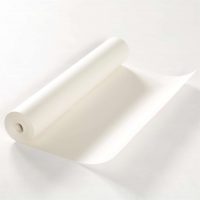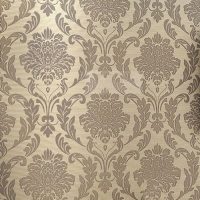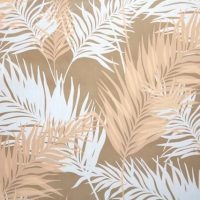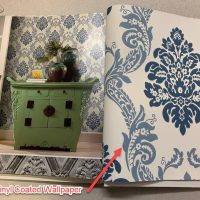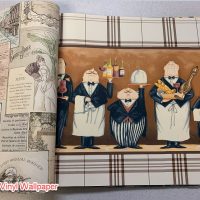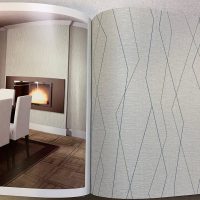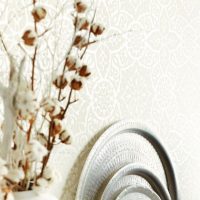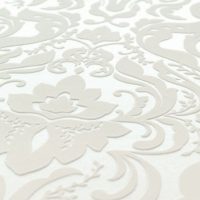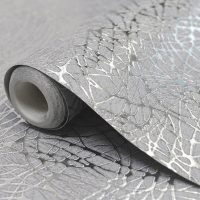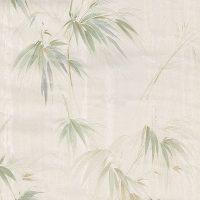Different wallpaper types have been used since before the 18th century to cover walls and act as a decorative element for interior spaces. It has notably emerged during the Renaissance period as an affordable alternative for tapestries, which were used by the rich classes back then to cover the stone walls, keep away the heat, and give color to their rooms. The earlier wallpaper featured scenes, rather than patterns, and its biggest two manufacturers were England and France.
China, also, started manufacturing high-quality wallpaper in the late 17th century. It was hand-painted and costly, and that’s why it was mostly used in palaces.
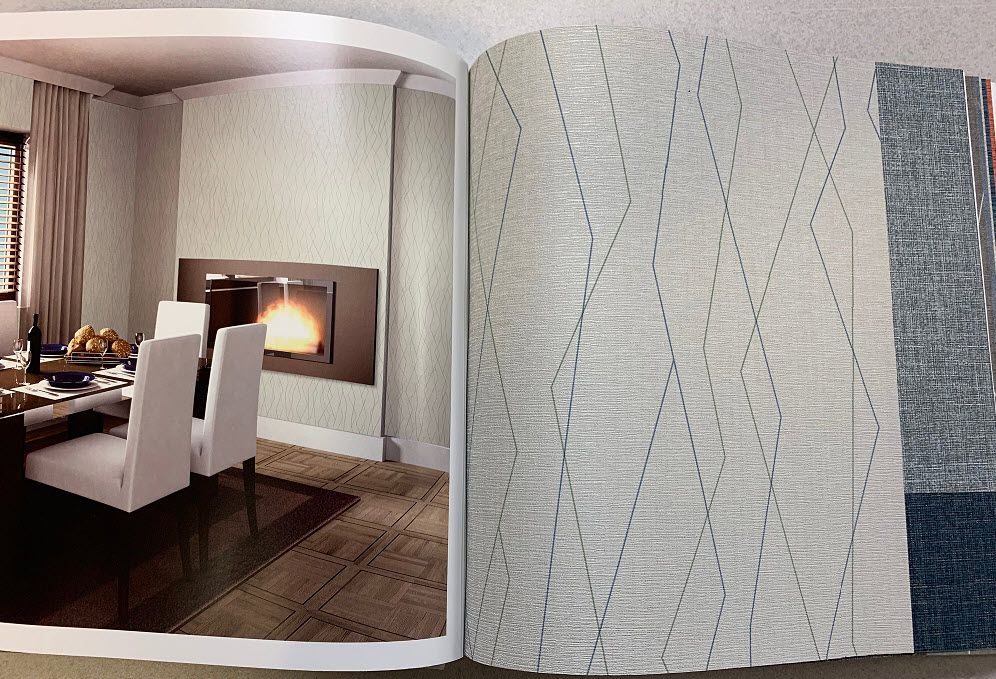
Vinyl Wallpaper
By the arrival of the 20th century, patterned wallpaper had become an essential wall finishing material for homes; however, halfway through the century, it had lost its popularity to plain painting. Wallpaper may not be what is trending now, but it is still a wall-finishing option worth considering – it can really add to the aesthetics of rooms with low space.
Manufacturers have recently been recreating wallpaper with some advantageous characteristics like blocking WiFi waves, protecting walls from falling during earthquakes, or for lighting purposes by incorporating LEDs. Also, the wallpaper techniques have evolved from woodblock printing and stenciling to digital printing.
Wallpaper is normally sold in rolls. American wallpaper is 27 inches (69 cm) in width and 27 feet (8.2 m) in length, while European wallpaper 21.5 inches wide and 33 feet (10 m) in length.
Now, we will review all the reasons why choosing wallpaper as a finishing surface for your walls at home is a good idea, and why it may not be. Then, we will list a selection of the many types of wallpapers, and briefly discuss their best uses.
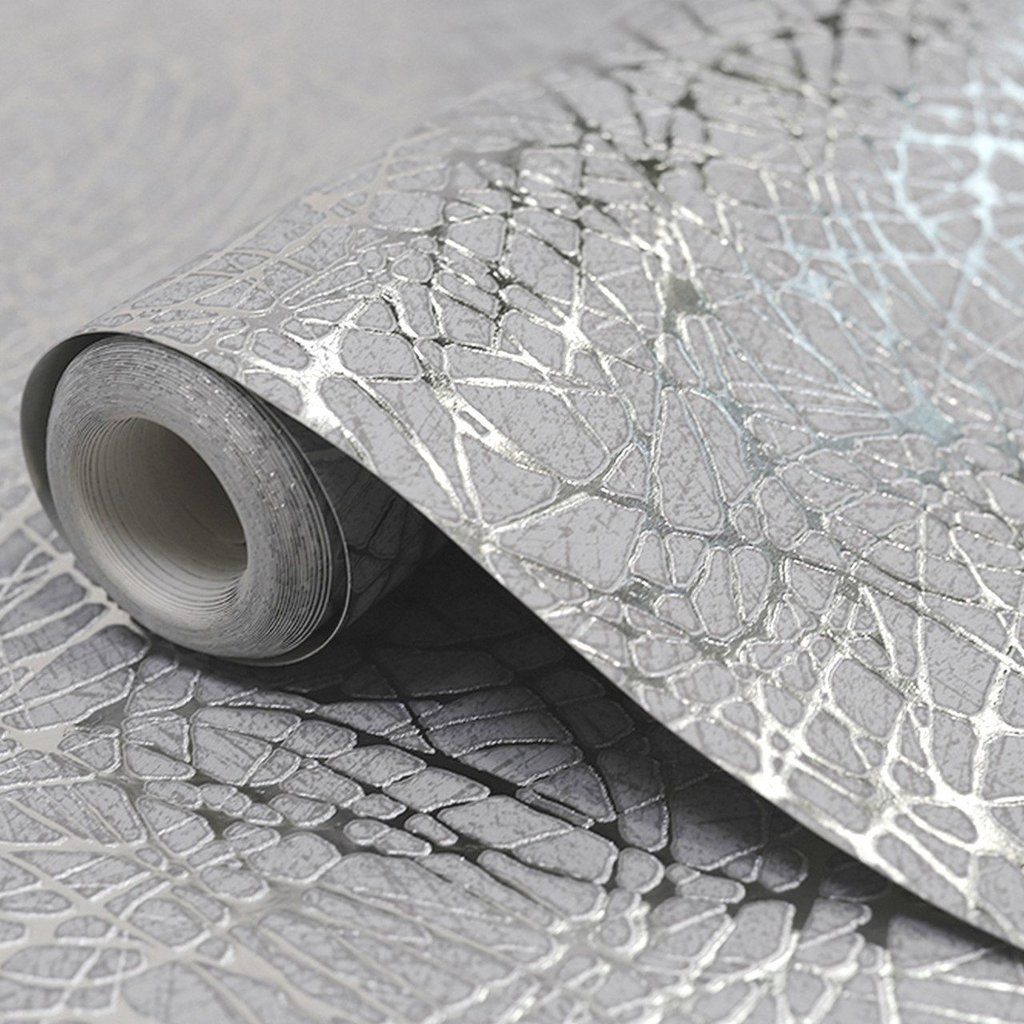
Foil Wallpaper
Why use Wallpaper?
Wallpaper may be more expensive than paint but it has many types; some of which are quite affordable.
- It is available in a wide variety of designs, patterns, and surface finishes.
- There are many ways to attach the wallpaper to your walls which include: paste the wall, paste the paper, and peel and stick.
- Wallpaper, and especially the peel-and-stick, can be easily removed and replaced.
- Some types can last for more than 15 years.
- Many wallpaper types are washable.
- Some types can be used for busy areas at home owing to their durability and easy maintenance.
- Wallpaper can, also, be used to personalize temporary homes, like dorms and rentals, since it can be easily installed and removed without leaving traces.
- It can cover uneven walls and hide the defects easily, with little initial preparations.
- Wallpaper can be considered eco-friendly, since it can be purely manufactured from natural materials, and its adhesives do not contain harmful chemicals.
Why not use Wallpaper?
- It is more expensive than paint.
- Traditional wallpaper is difficult to maintain and remove.
- The edges may separate from the wall, especially in damp weather, and need to be reattached or pasted.
- Patterns need to be matched and well-aligned together. That requires a good deal of accuracy.
- It can’t be applied on raw concrete and textured walls.
- Wallpaper colors may be affected by light and shadow. Parts that are exposed to sunlight daily could burn out.
- The more fragile types of wallpaper may not last more than 5 years.
Types of Wallpaper
1. Liner Wallpaper
Also known as lining paper, this type of wallpaper is made from paper or fiberglass. It is effective for hiding wall defects and minimizing repairs, and it can be a base for more delicate wallpaper types. It can be used alone, and maybe even painted. Moreover, it is easy to apply and remove.
2. Printed Wallpaper
This type is commonly used and available in a wide variety of colors and patterns. The digitally-printed wallpaper is normally cheaper than the hand-printed, and it can be mass-produced, but it could be torn easily. Also, the printing ink is water-based, so it’d better not be used in kitchens and bathrooms.
3. Vinyl Wallpaper
This type of wallpaper is composed of printed paper coated with layered vinyl. It is the most commonly used type of wallpaper, currently, because of its high durability. The thicker the vinyl coating layer is, the more durable the wallpaper will be. Vinyl paper can be used in kitchens and bathrooms, as it can of withstanding steam. It is can also be washed, making for easy maintenance.
4. Foil Wallpaper
A polished metal foil is used as a base for this type to give the interior space a shiny metallic effect. Due to its high reflectivity, foil wallpaper highlights wall defects. So, the base wall needs to be repaired, treated, or covered with lining paper first. The lining and adhering process need to be neat enough, not to ruin the foil’s reflectivity and shine.
5. Flock Wallpaper
Flock wallpaper is distinct for its fuzzy three-dimensional patterns, created from a velvet-like fiber that is printed on a base of the paper. It is one of the most expensive wallpaper types, yet it is hard to maintain. Its velvety texture reflects a sense of luxury; however, it is not washable and could be hard to remove. Accordingly, it is best used for rooms with lower traffic, like the master bedroom or guest room.
6. Mylar Wallpaper
Mylar wallpaper comprises a printed paper base and a polyester film applied on top of it. It has a wet or shiny appearance, kind of similar to foil wallpaper, and likewise, it highlights wall defects, so prior paper lining is recommended. The polyester film makes it possible to wash Mylar wallpaper, and it is also easy to remove. However, further care should be given to the installation process to avoid creasing the paper. It is most commonly used for kitchens and bathrooms.
7. Bamboo Wallpaper
This type is handcrafted from natural bamboo and glued to paper. It is environmentally friendly, and its hue varies from one roll to another owing to its natural base. However, it requires delicate treatment when gluing and installing as the adhesives can ruin its appearance, and it is not washable.
- Liner Wallpaper
- Printed Wallpaper
- Mylar Wallpaper
- Vinyl Wallpaper
- Vinyl Wallpaper
- Vinyl Wallpaper
- Flock Wallpaper
- Flock Wallpaper
- Foil Wallpaper
- Bamboo Wallpaper


